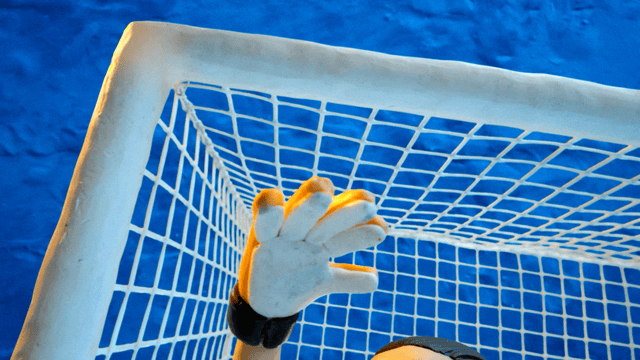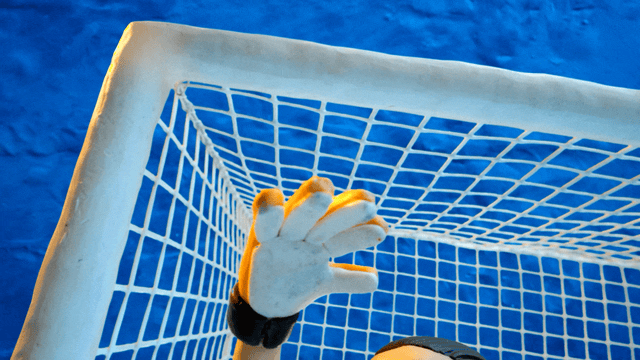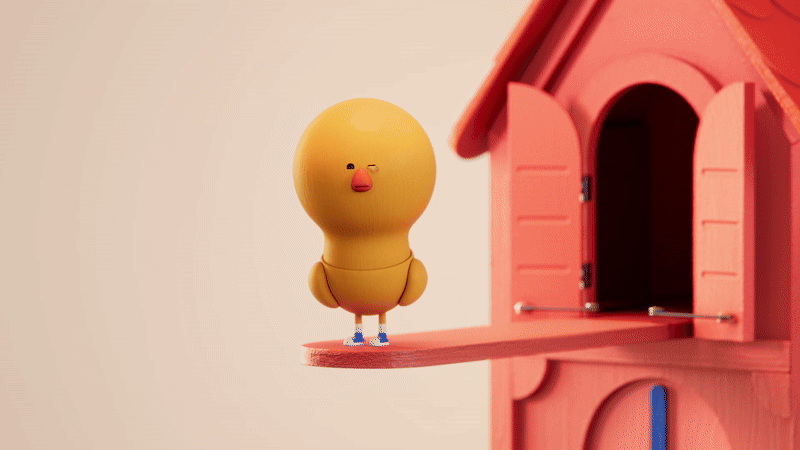How Anthony Dickenson made months of monoprints for Rival Consoles
To create his unique and mesmerising promo for the synth act, the 1stAveMachine director created 11 painted rolls, each 20 metres long, to house 5000 frames of pulsing imagery. shots sat down with Dickenson to find out what led to such a meditative and drawn-out project.
With budgets tightening and tools ever progressing, speed often feels like the defining factor in today’s creative process.
That’s why a project like Soft Gradient Beckons — a promo and art installation for Rival Consoles from 1stAveMachine director Anthony Dickenson — feels like such a refreshing change of pace.
A frame-by-frame animation crafted from over 5,000 hand-painted monoprints, the film unfolds as a meditative visual journey, blurring the line between fine art and moving image. Reminiscent of avant-garde pieces like Stan Brakhage’s Mothlight and Tony Conrad’s The Flicker (though less visually intense than either), Dickenson’s work embraces the glitches and imperfections that arise from such a tactile process, giving the imagery a raw, authentic quality.
We caught up with the filmmaker to find out how long it all took, why he chose such a painstaking method, and what he learned along the way.
Credits
View on- Director Anthony Dickenson
- Editor Anthony Dickenson
- Animator Anthony Dickenson
- Producer Milly Upton
- Colorist Dan Lowe
Explore full credits, grab hi-res stills and more on shots Vault

Credits
powered by- Director Anthony Dickenson
- Editor Anthony Dickenson
- Animator Anthony Dickenson
- Producer Milly Upton
- Colorist Dan Lowe
5,000 hand-painted frames is no small feat! What made you go down that route, and what kept you going when your wrist (or patience) was ready to give up?
It started a few years back with a love of painting and printmaking. I then had the idea to monoprint animation frames using a print roller. I ran a few early tests to see how the degradation from one frame to the next would play out when sequenced. It was rough, but there was something exciting in it - I could feel the potential. I just needed to find the right balance between deconstruction and intentional stop-frame. There was something alive in the imperfections, the unpredictability of the paint, the way each frame echoed the last but was never quite the same.
The track has no clear beat ... so the animation had to find its own pulse.
What kept me going? Honestly, I really enjoyed it. Having a decent amount of time meant I could fully lean into the process.
Without pressure, it became meditative, physical, repetitive - almost ritualistic. I’d lose track of time and forget everything outside of it.
When did you pitch the idea to the band, and how did they respond?
It wasn’t really a pitch. Ryan (Rival Consoles) moved in above me, and at some point saw the work I was making. He was really into it, so I showed him some animation tests, and it all came together pretty naturally.
His music has a real physicality and atmosphere, so I think he saw the potential in something that wasn’t overly polished — something that mirrored the grain and emotion in his music.
How did the music shape the visuals? Were there moments in the track that demanded a different technique or rhythm in your animation?
There are two main elements at play: the animation itself and the camera language. I began with simple shapes and a general progression toward something more painterly. I also knew I wanted the framing to gradually widen and break away from the flat 2D perspective, eventually revealing the physical scale of the piece. Beyond that, I just went for it. I don’t like to over-plan — I’d rather make mistakes and respond to them.
The track has no clear beat. It swells and contracts emotionally more than rhythmically, so the animation had to find its own pulse. Some sequences became quicker and more fragmented because the music demanded more movement; others slowed to almost nothing, where the sense of motion came from the camera rather than the frames themselves.
A lot of those rhythms came together in the edit, and I reshot transitions and varied angles to suit the flow.
Did any frame or moment surprise you once animated — something that didn’t come alive until it moved?
Yes — almost all of it, to be honest. There are so many variables, but one of the most unpredictable (and satisfying) is how much you water down the ink. You can see it in the opening sequence: it’s really just a couple of triangles rotating, but the spread of the ink is the magic.
There were also moments where barely anything changed between frames, but once animated, they shimmered. One of the biggest surprises was how much emotion could come from something so small - a slight blur, a missed line, a wash of ink that bled more than I’d intended.
Were you ever tempted to ‘correct’ imperfections, or did you let the marks stay as they were? How important was imperfection to the piece’s emotional tone?
No, I let it all stay. The whole piece is full of dust, scratches, the rough texture of the table seen through the translucent paper, pools of sunlight, soft focus - oh, and quite a lot of my hair. It’s all part of the story.
One of the biggest surprises was how much emotion could come from something so small - a slight blur, a missed line, a wash of ink that bled more than I’d intended.
The piece is about time, erosion, and repetition. It would’ve felt dishonest to clean it up. The scratches and slips give it its voice.
They feel human - and that is the point.
The full 11x20-metre rolls sound like an impressive spectacle on their own. Do you see the piece more as a promo or as a piece of art in itself?
It’s a piece of art to me, and so is the music. It functions as a music video, but when you see all the frames laid out, it becomes something else: a visual timeline, a record of labour — almost a score. The installation is where the sense of time really reveals itself. The paper is the proof.
Credits
View on- Director Anthony Dickenson
- Editor Anthony Dickenson
- Animator Anthony Dickenson
- Producer Milly Upton
- Colorist Dan Lowe
Explore full credits, grab hi-res stills and more on shots Vault

Credits
powered by- Director Anthony Dickenson
- Editor Anthony Dickenson
- Animator Anthony Dickenson
- Producer Milly Upton
- Colorist Dan Lowe
What’s one thing you wish people knew about the process that they might not immediately realise when watching the film?
Ideally, there’s just enough at the start to keep people watching, so the film can answer everything for them.
It should be clear early on that nothing is generated - it’s all physical, all real.
This project feels very human — labour-intensive, tactile, and (for want of a better word) slow. Was that, in any way, a conscious counterpoint to the speed and ease promised by AI tools?
Definitely. Not in a reactionary way, but I wanted to embrace slowness - the kind that makes you feel time.
There’s a certain relief in doing something inefficient, especially now. This project couldn’t have been made quickly, and I didn’t want it to be.
There’s a certain relief in doing something inefficient, especially now.
The speed of AI is impressive, but so much gets flattened in the process.
This was about depth, not output.
Looking back, is there anything you learned through this that you’d like to bring into your more commercial or collaborative projects?
Yes - the value of process, the power of texture, and the idea that some of the most moving work comes from mistakes and letting go of control.
I’d love to bring more of this physical, hands-on energy into commercial projects - not just for the aesthetic, but for what it communicates emotionally.
People feel the difference. Especially now.
)














